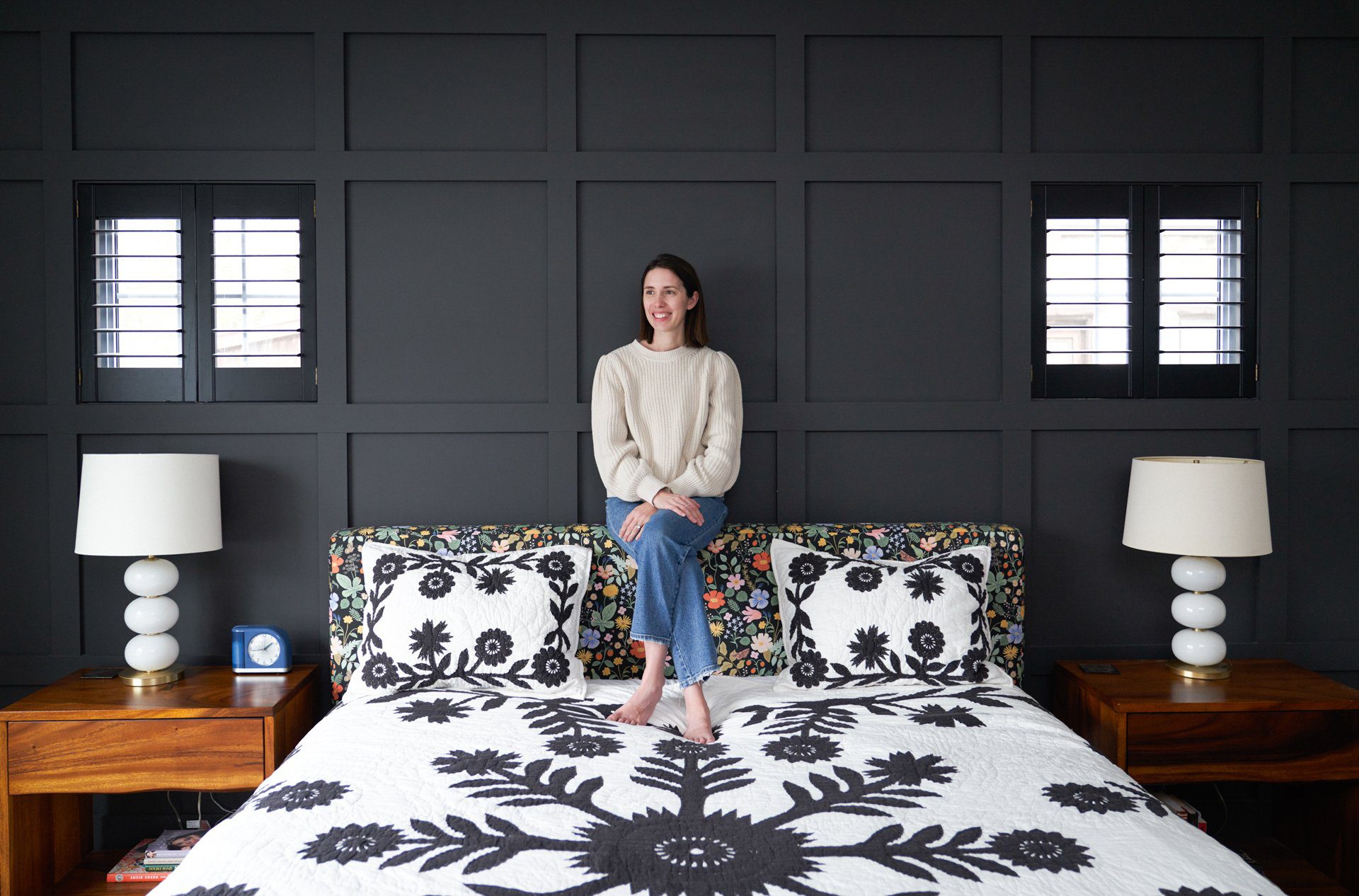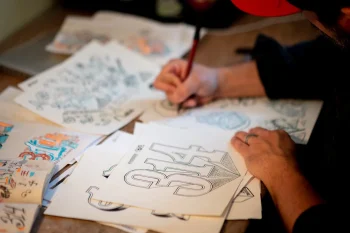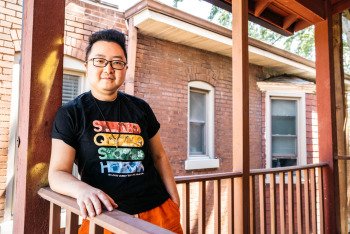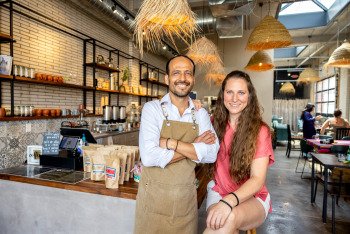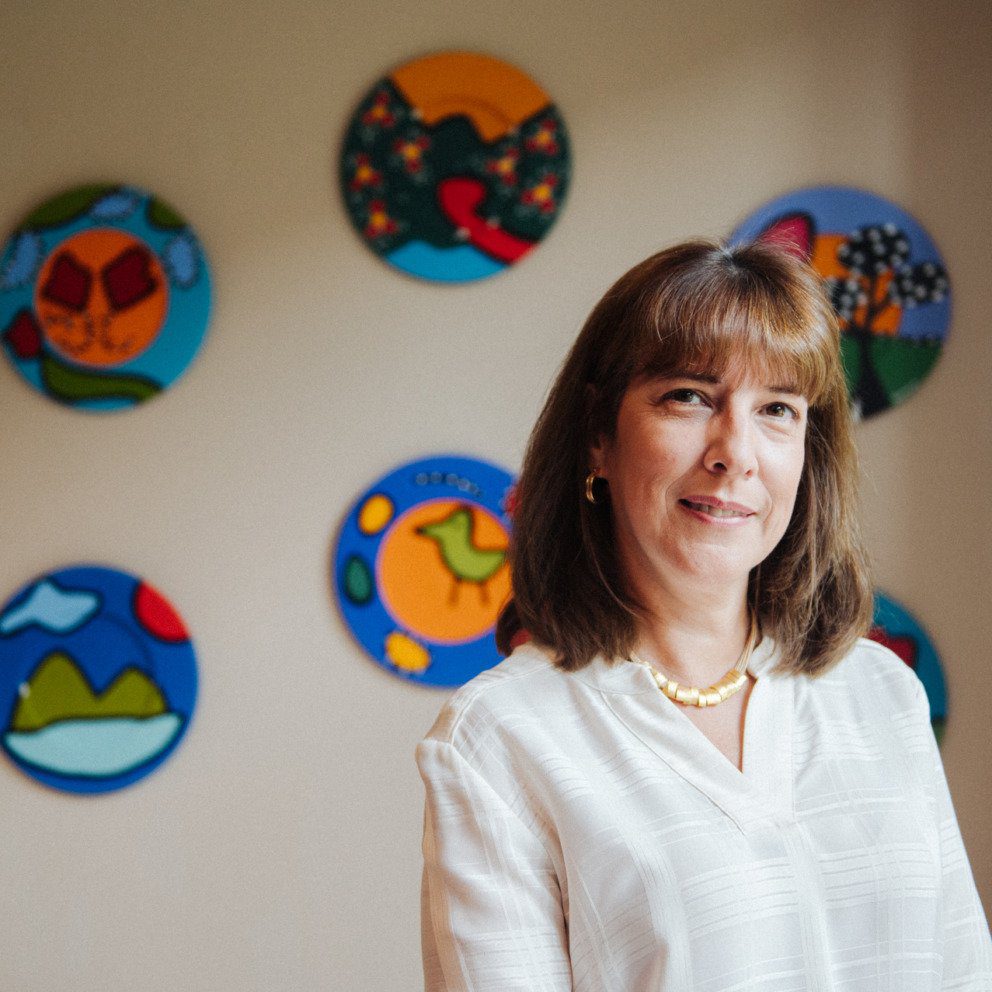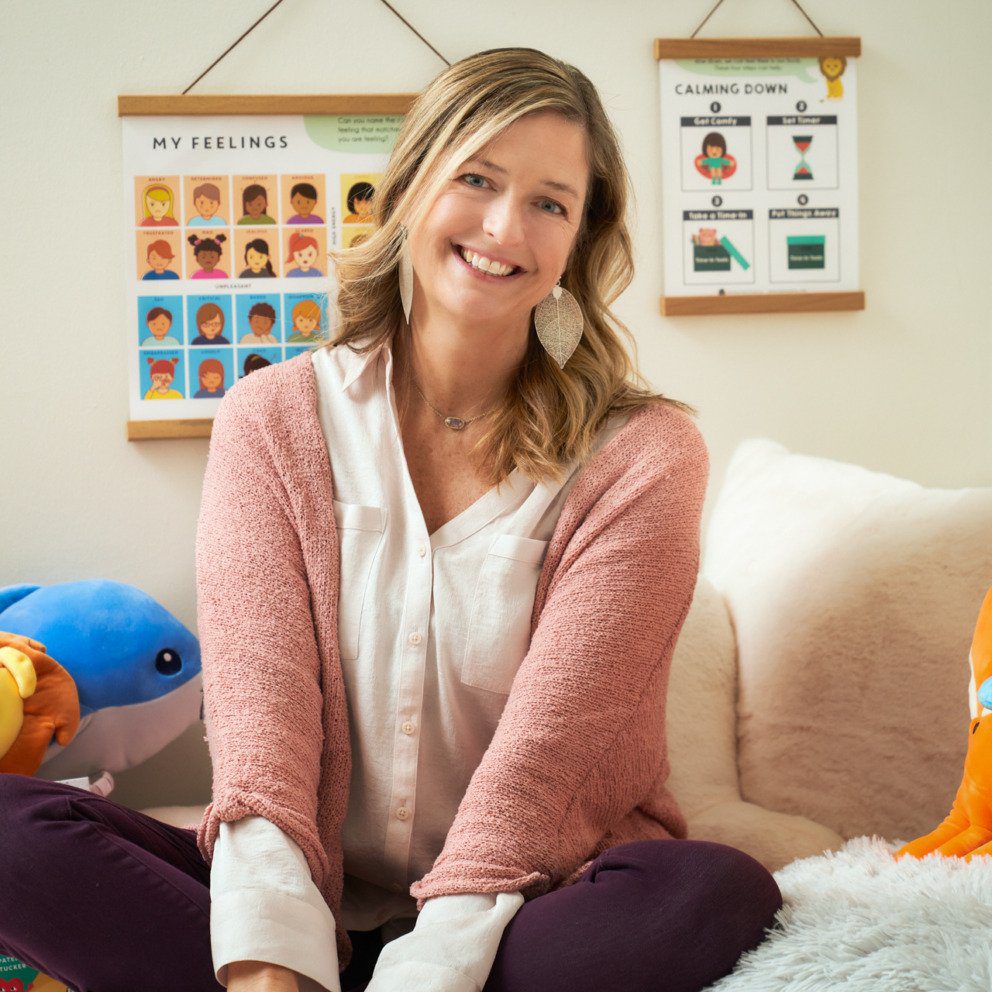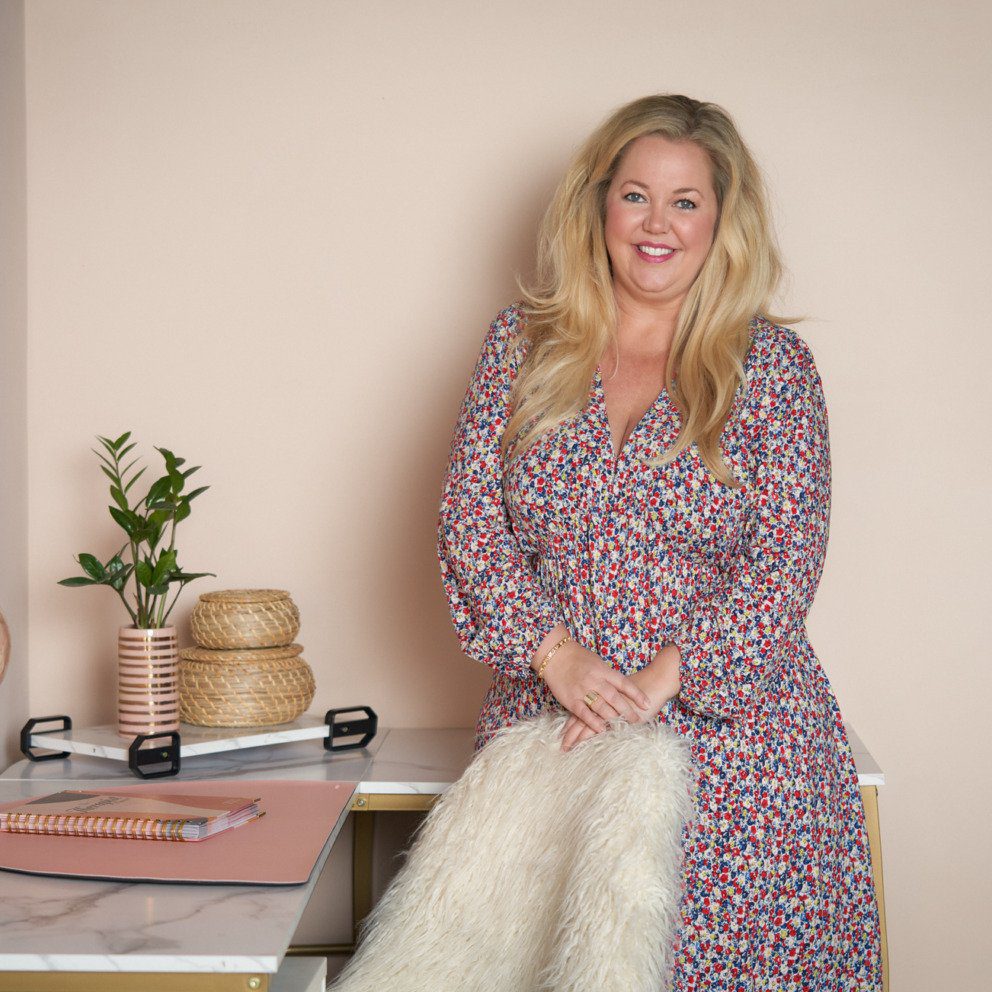Taking Care of Business
Rebecca van Bergen’s nonprofit Nest aims to advance gender equity and economic inclusion through craft.
Rebecca van Bergen cannot help but smile when she hears the words “artisan” or “handcrafted” tossed around casually in everything from drinking water to car commercials. It’s a phenomenon so ubiquitous these days, but one that could not be further from anyone’s lips when she founded the craft-centered nonprofit, Nest, back in 2006.
“That was before the world of Etsy and consumers talking about artisan or small batch products,” van Bergen says. “These are consumer trends now, but they didn’t exist at that time. Back then, people thought of craft as kitschy or the things you got when you were traveling. There was some belittlement of the sector; most thought of it as niche, non-scalable women’s work. Fast forward to now, and artisan has become everything. It’s used in car commercials and potato chip ads, just everywhere.
“The world around us began embracing models we were invested in, and that has been incredible.”
Though van Bergen was not sure how those models would exactly play out when she founded Nest – which now includes West Elm, Hermès, Tory Burch and Madewell as its partners – she had a feeling something was starting to brew. As a social work graduate student of the Brown School at Washington University in St. Louis, van Bergen watched as microfinance became the hot new idea in international development and saw its potential for empowering craft entrepreneurs around the world. She appreciated the idea behind it – providing access to capital to those typically shut out of the traditional banking system as a way to start businesses and achieve financial security – but she was also wary that it burdened small-scale makers with debt that they might not be able to repay.
Figuring there had to be a better way, van Bergen began exploring debt-free models to empower women artisans and came up with a plan for Nest. Designed as a nonprofit that would facilitate connections between a worldwide guild of small-scale women artisans and the brands interested in buying their goods, Nest would harness the collective power of these individual makers, provide them with the resources needed to scale and succeed, and connect them to markets. At the same time, businesses interested in buying from Nest artisans could not only find talented artisans, but they could rest assured these makers were vetted and capable of delivering what they needed. It was such a win-win endeavor that the plan earned van Bergen the Washington University Skandarlis Center prize for entrepreneurship, which gave her the seed money she needed to get the Nest idea off the ground.
Van Bergen ran Nest out of St. Louis for its first two years and then moved to New York City, continuing to build the Nest network – both on the maker and the brand side. She describes the process as slow and steady, connecting international craftswomen with small museum stores and boutiques in order to help them gain market access. As Nest grew, so did larger companies’ interest in microentrepreneurship; combined, this created a critical mass for Nest and its makers.
“We worked on this one relationship at a time,” van Bergen says. “Once you have one brand, it’s easier to get the next one because they speak to each other. Once we had goodwill and success, they would advocate and introduce us to others.”
In 2016, Nest had its big break when West Elm came on board as a corporate partner. At that time, its new CEO saw craft as a way for the brand to differentiate itself and made a commitment to the Clinton Global Initiative to purchase significant inventory from small-scale artisans. They needed a company that could help them realize their goals, and Nest was a natural fit; not only did van Bergen connect them to the women who could provide them with products, she was also able to help them vet their international makers through Nest’s Ethical Handcraft auditing program, a set of shared standards around age of workers and pay rates, which can be difficult to assess in informal, often home-based craft environments.
While Nest’s offices were located in Manhattan, their temporary closure in 2020 during stay-at-home orders forced the van Bergens to re-evaluate the need for an office at all. Once they decided to shift from a traditional office organization to one where their employees were fully remote, they took the opportunity to move near their family in St. Louis. Since moving back to the region, van Bergen has connected with more local makers, including Lisa Dolan of Lark Skin Co., Kristin McDonough of Hollis Leather, Sara Patino of Sara Patino Jewelry, Tiffany Wesley of Pure Vibes and La’Crassia Wilderness of Butter Love.
Patino has experienced firsthand the empowerment that comes from being a part of Nest’s guild. A St. Louis-based jewelry designer who crafts eco-friendly, ethically sourced pieces, Patino belongs to Nest’s domestic network of makers, which has given her access to opportunities she never imagined would come her way. This includes receiving Nest’s Maker’s United grant, supported by the Tory Burch Foundation, which provides business development capital and mentoring to women entrepreneurs. Through this opportunity, Patino was able to make vital investments in her business, met with Tory Burch herself, and got connected to an invaluable network that allows her to build her brand on her own terms – things she never would have been able to do without the support of Nest.
“There is not a lot of help out there, but there are a lot of us out there,” Patino says of the women makers community. “Nest has become so valuable from personal experience because they understand where I am coming from, understand that my work and my mission are important, and they are filling gaps for female funded craft-based businesses like mine because they know it’s a struggle. There is no one else out there formally noticing us unless we pay for coaching programs. I have been supported in so many ways through Nest – and I am just grateful for it, not only for me, but because I know they are impacting so many other makers in my same situation.”
Dolan, founder of the St. Louis-based Lark Skin Co., echoes Patino’s sentiment. Though she found success in getting her products picked up by a major retailer before her involvement with Nest, she’s benefitted from the nonprofit’s assistance to businesses that go beyond initial market access assistance.
“I had already been through the process of getting in with a major retailer, but I wish I would have had Nest be my first experience because they help you see behind the curtain,” Dolan says. “This has been such a great learning process; I thought there was not much I could learn because I had already been through it, but I’ve learned so much from their webinars and being able to hear from buyers about what they are looking for and even working with other brands to talk about what they are doing. That mentorship and being able to connect with a community of smaller brands is invaluable.”
Van Bergen sees that the need for Nest’s service is only going to grow as the makers’ sector increases its visibility and consumers continue to demand their products. She sees St. Louis as a microcosm of this phenomenon in the way that the artisan and makers movement has taken off in the years since she founded Nest. As a social work graduate student in 2006, van Bergen recalls there being very little awareness of the sector beyond its niche market; since moving her business back to town in 2021, she’s been blown away by both the interest in artisan products, the amount of talent in the craft space and the infrastructure – such as the Delmar Makers District – that has been put in place to support small-scale artisans. Van Bergen believes this will be instrumental in building up the next wave of makers, which she believes will be climate-focused and center around upcycling and repair.
No matter what exact form the craft sector will take in the future, van Bergen is confident it is a movement, not simply a moment. She sees the work Nest does as not simply facilitating business transactions between artisans and brands, and she believes its mission is even more poignant than empowering those traditionally shut out of large corporate and financial structures. For van Bergen, the reason Nest is so important is that it satisfies the need for relationship and connection – something that the craft sector is uniquely poised to deliver and she is thrilled to help facilitate.
“There is so much talent in the craft sector, and it is exciting because there is a wealth of amazing producers that brands would love to promote,” van Bergen says. “If you zoom out and look at the rise and interest in handcraft, it has really paralleled a rise in automation and technology. Everything is online, so it feels like the human psyche needs a counterweight to that. We don’t want everything to be digital and online. Even if you are buying through online networks there is a longing for human connection.
“We see them as two sides of the same coin, and we want to invest in making sure consumers know the makers and know how things are made so they can have that connection.”
Join the Story
- Artisans can join Nest’s Guild for free access to resources, tools and mentorships.
- Shop Nest products.
